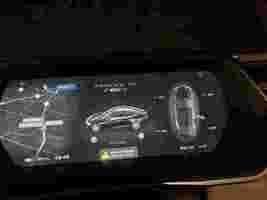Escooters in the UK: Over-policing, media hysteria, and antiquated laws
When is a form of transport both legal and illegal simultaneously? In England, this is the reality for escooters, where their legality depends on whether riders own or hire them.

The battle between public and private escooters has meant that their low carbon footprint in the micromobility space has been obscured mainly by police intervention and what some call over-policing.
I wanted to understand the situation more. So I reached out to Dott, who is participating in Transport for London’s (TfL) escooter hire scheme, and also a private escooter retailer, Escootered . But first, let’s take a walk through the legalities of escooters in the UK:
Law and order
In micromobility , escooters are a poster child for when tech rolls out faster than the laws around its use.
In the UK, escooters are covered by the Road Traffic Act (1988) and fall under the category of powered transporters .
z It’s legal to buy, sell, and own escooters. There’s no age limit on ownership. But you can only ride them on private land.
By comparison, rideshare escooters can be ridden on roads and cycle paths and can only be hired by people 18 years or over who own a category Q or P/M driver’s license. For all riders, there are penalties for bad behavior, including a €60 (£50) fine for riding on the footpath, and a €120 (£100) fine and six driving license penalty points for using a mobile phone or riding through a red light.


The problem is that illegal escooter riding on roads, bike paths, and sidewalks is abundant. Many people are using their purchased escooters for commuting, despite the fact that it’s illegal.
I spoke to Ed Wiles, owner of retail business Escootered , who shared:
He suggested
Notably, it’s not illegal to ride an escooter without a helmet. However, rideshare companies like Dott offer incentives to riders. These include bonus points towards free rides for those that take a selfie wearing their helmet.
Wiles also raises an important point: the risk of injury.
How common are escooter injuries?
There’s plenty in the press about injuries caused by riding an escooter, and the head of the Metropolitan road and transport police has not helped their reputation by branding them as “ death traps .”
Escooter crashes shot up almost 2,800% in London in the first half of 2021 compared to the entirety of 2018, according to Met Police data.
There were 258 collisions in the capital in the first six months of last year. In 2018 there were 9.
It’s unclear exactly how many of the injured riders are private owners riding illegally or rideshare participants. There are also no details on whether the “collisions” were people falling off their escooters or colliding with pedestrians or road users.
We do know that those injured are most like to be inexperienced riders. A 2018 report into escooter injuries resulting in hospital or emergency service treatment found that two-thirds (65%) of those injured had ridden an escooter zero to nine times).
According to Dott , data revealed that 33% of accidents happen within the first three rides. In response, the company limits the engine speed for these first few trips. Dott says this helps riders get comfortable with the scooters and reduces the likelihood of accidents.
Dott also requires users to complete a training course via its app.
The challenge of policing and curbing bad rider behavior
It’s relatively easy for rideshare companies to control user behavior by slowing down dangerous riders and stopping escooters from moving when ridden on the sidewalk. Such actions are not possible with privately-owned escooters.
Further, according to Wiles, conviction rates against illegal owners vary according to location. Boroughs outside London are more likely to give verbal warnings to offenders, for example. Officers in London seized 3,637 privately-owned e-scooters in total between January and November 2021.
Research by VICE found Black teenagers are overrepresented in these seizures, suggesting it was part of a bigger problem of racial discrimination and over-policing.
Earlier this month , a private escooter rider sought compensation after suffering serious injuries when he was overtaken by a London bus while riding his escooter illegally on the road. His lawyer told The Times :
Private escooters got another blow in December
In December 2021, TfL banned private e-scooters on its network after one burst into flames (although they can still travel on overground trains). According to Wiles:
At present, the legalization of escooter on UK roads and bike lanes is up in the air. Rideshare trails have expanded to 34 areas of England. They were originally due to last 12 months but are now extended to November 2022 .
Until the UK Government’s rideshare escooter trial concludes, it’s unlikely we’ll see any indication of legal reform around escooter use. Rideshare companies are working hard in their communities to ensure rider safety (and those surrounding them). Regardless, I’m not sure private escooters will collectively suddenly town the line. Attempts to curtail private owners riding illegally show no sign of succeeding. Further, every accident, collision, or impounding only serves to damage their cause.
3 easy-to-read academic articles for mobility tech nerds
I know, I know. Academic articles aren’t always thought of as the most exciting reads. However, they are incredibly important in developing our understanding of the changing world.

What’s more, they can be quite fun to get your teeth into if you’re craving to read something detailed and focused on a very specific topic.
But where to start in climbing the mountain of academic literature that exists? Well, let me help by suggesting three articles that I’ve come across this year that proved interesting and insightful reading.
1. How ebikes affect bicycle use
First up is the article: Effects of e-bikes on bicycle use and mode share , by Aslak Fyhri and Nils Fearnley. Published in the journal Transportation Research, this article takes a look at the impact ebikes have on changing how we get around.


As ebikes began to gain popularity, some believed that they were just going to electrify cycling and there wouldn’t be a positive environmental benefit. In other words, people didn’t think they would actually get more people cycling instead of driving.
So, in short, this paper seeks to answer the question: do ebikes get people out of cars and onto bikes? But no spoilers, go read it to find out.
2. The economics of Hyperloop technology
Hyperloop technology, is making big promises. It’s meant to be fast, clean, energy efficient, and zero emission. However, Hyperloop is still an unproven concept in the real world and there is still much debate over the economics and cost-effectiveness of the vacuum tube transportation.
While testing is slowly going in the right direction, it’s unclear when it will be available and how much it’ll cost passengers.
Thankfully, there’s a fair bit of research that looks into possible scenarios that need to play out for it to be profitable. Check out this article from Virgin Hyperloop One on the economics of their system .
Or if you want to dive even deeper, Jacob Covell, from Penn State University, wrote their thesis on the topic . Their article is good read if you’re new to hyperloop technology and also want some background on the tech itself, before getting on to the economics.
3. The overselling of automated driving technologies
Despite various technological advances, there are still no true self-driving vehicles on our roads. Sure, there is plenty of testing happening, and Tesla rolled out its Full Self Driving Beta last month, but we’re a still long way off the tech being a reality.
Indeed, with marketing and names like Autopilot and Full Self Driving, one would be forgiven for thinking that the tech is already here.
If one thing has happened this year, though, it’s this: we are waking up to the risks and dangers associated with the misuse of automated vehicles technologies.
One of the biggest risks we face comes from the fact that many of these technologies are oversold, and have vague or outright misleading brand names. This is called autonowashing , a word that was officially coined by human-machine interaction researcher Liza Dixon.
The phenomenon was outlined in her 2020 paper: Autonowashing: The Greenwashing of Vehicle Automation . With self-driving vehicles just over the ever impending horizon, it’s a highly relevant read for modern times.
So there you have it, a first step into the world of academic literature in the field of mobility tech. Happy reading.
SHIFT is brought to you by Polestar. It’s time to accelerate the shift to sustainable mobility. That is why Polestar combines electric driving with cutting-edge design and thrilling performance. Find out how .
A Tesla’s highway breakdown reveals woes for EV safety
Have you ever been in a situation where your car suddenly stops for no obvious reason? Ok, no worries, you are thinking, you can just push your car to the side of the road. But in the case of a Tesla or other electric vehicle, this is not always possible.

Well, this happened to Alan Puccinelli, who shared his experience on Twitter. I recommend reading the whole thread published a few hours after the event.
It starts: “On the way to dinner tonight my @Tesla literally locked up IN THE MIDDLE OF THE HIGHWAY! A message I’ve never seen before popped up saying “Vehicle May Not Restart: Service required”


It gets worse:
You’re probably thinking, “oh shit,” about now. I spoke to Alan to find out more. Fortunately, the hazard lights worked in his Model S Tesla, and the doors opened. He could also open the windows. Luckily, some nearby California Department of Transportation (Caltrans) workers could help cone off the car and help direct traffic around it until a tow truck showed up 45 minutes later.
Not just Tesla
Ok, hold up before you send me hate letters for writing anything negative about Tesla. Let’s get to the big white lumbering elephant in the room (or on the road). This is a problem NOT limited to Tesla.
According to Jason Torchinksky, this is an industry-wide problem with EVs. Every EV has some way to get the car into neutral. But all the major EVs sold require the car to be at least partially functional to access the controls to get it into a tow or free-rolling mode, as these are usually accessible through the car’s center-stack touch screen.
For example, Ford and Tesla require the touch screen to be functional, meaning you need access to at least some 12V or main battery power .
As Alan noted:
Who you gonna call?
Even worse, when Alan’s car bricked it, he lost the main power to the console of your car, and the ability to look at the manual. “I can’t just open up a glove box and refer to how do X.”
Alan thankfully had his phone. Tesla roadside support is only available through text chat support. Yep, you’re stuck in the middle of a highway frantically typing on your phone. There is no number listed anywhere.
He recalls:
Fortunately, he finally found a number via Google to speak to a live human and found that they had already escalated the situation through customer support.
The problem of towing a Tesla or other EV
However, if you fail to use a Tesla authorized service, you risk them not reimbursing your insurance repair costs. Further, transporting a bricked Tesla is complicated , requiring a bit of know-how, or you face the risk of damaging your car during towing further and even voiding the warranty. Many electric vehicles don’t have a neutral position, allowing the car to move the wheels without affecting the motor.
Alan shared:
There is literally no manual override
Earlier this year, Porsche recalled the Taycan electric four-door after the National Highway Traffic Safety Administration‘s (NHTSA) Office of Defects Investigation received complaints that vehicles completely lost power while owners were operating the electric cars.
Further, there are situations where electronic parking brake system fails on ICE vehicles, which shows that digital hazards aren’t restricted to EVs.
We can’t get the basics right. What does this mean for the future of vehicle automation?
Ok, so let’s break down the issues of Alan’s Tesla failure . We have no manual override to get the car to a safe place . If the dashboard is not functioning correctly, we have no means to access the manual. If we want to call a service rep in an emergency, we’re supposed to type to them in chat. If our car needs towing, we risk damaging the engine in the process.
To say it’s a woeful scenario for EVs is an understatement. It bodes even worse for autonomous vehicles . Automakers have promised us a future where cars are smart, connected, and intuitive — and able to think and act without human intervention.
Alan noted:
But when it comes to a severe situation, it’s a disaster.
These cars don’t sound very smart
To me, a truly smart car could diagnose and respond to system failure. In an ideal world it would be something like, when the car is malfunctioning, it can alert the driver, get somewhere safe of its own volition (ok, not always possible). It should be able to send a message to road services to send out a crew.
Service staff should be able to take over car functionality remotely or send an over-the-air update if the problem is digital, not mechanical. These basic safety capabilities are just not there yet in an unpredictable scenario.
So what was wrong with Alan’s Tesla?
A Tesla service advisor attributed the failure due to an isolation fault in the rear-drive unit. Alan shared :
Alan sent a letter to Tesla explaining the incident. The issue has been escalated to corporate, but he’s still waiting for a response. As he told me:
Do EVs excite your electrons? Do ebikes get your wheels spinning? Do self-driving cars get you all charged up?
Then you need the weekly SHIFT newsletter in your life. Click here to sign up .